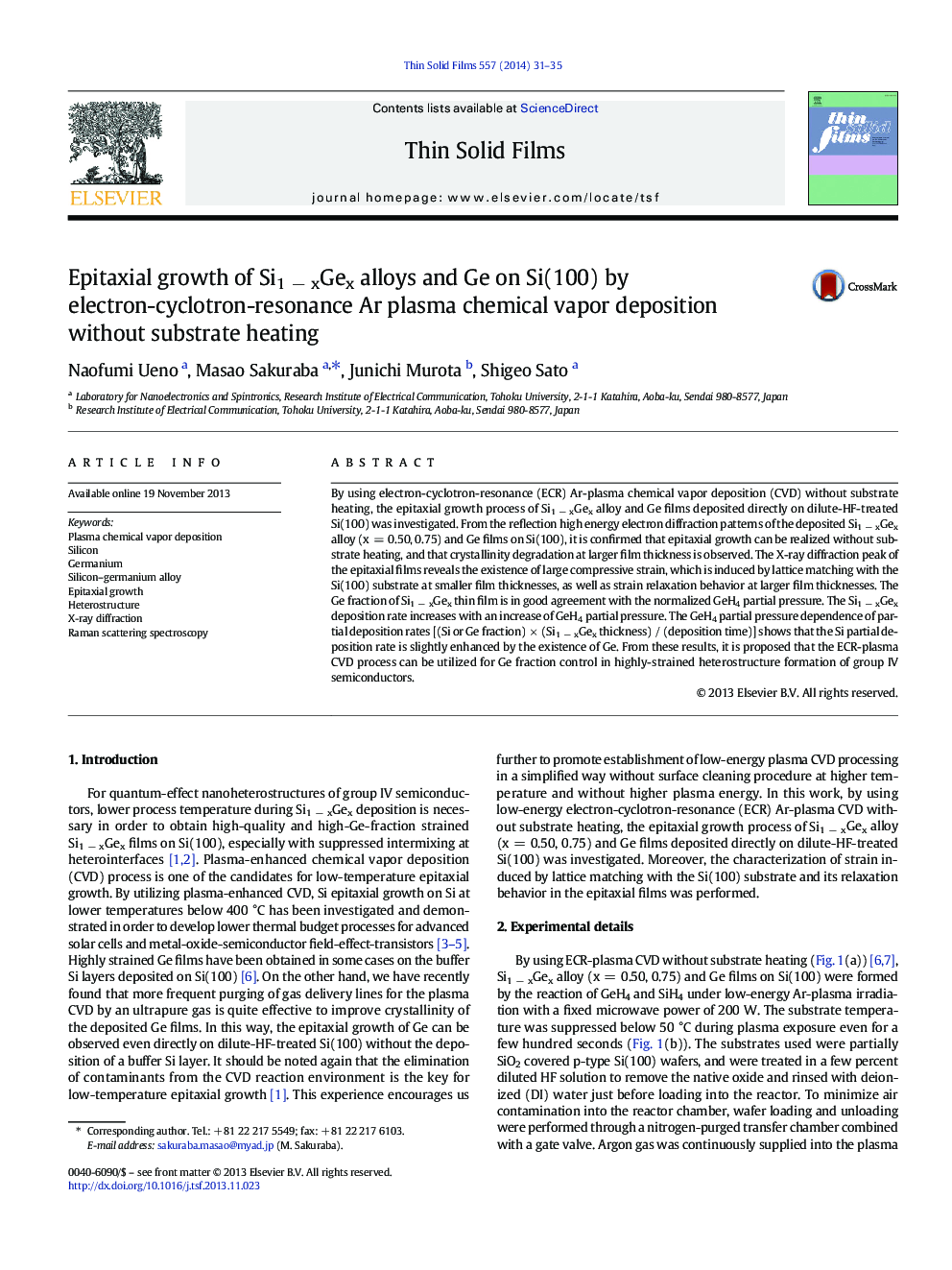| Article ID | Journal | Published Year | Pages | File Type |
|---|---|---|---|---|
| 8035102 | Thin Solid Films | 2014 | 5 Pages |
Abstract
By using electron-cyclotron-resonance (ECR) Ar-plasma chemical vapor deposition (CVD) without substrate heating, the epitaxial growth process of Si1 â xGex alloy and Ge films deposited directly on dilute-HF-treated Si(100) was investigated. From the reflection high energy electron diffraction patterns of the deposited Si1 â xGex alloy (x = 0.50, 0.75) and Ge films on Si(100), it is confirmed that epitaxial growth can be realized without substrate heating, and that crystallinity degradation at larger film thickness is observed. The X-ray diffraction peak of the epitaxial films reveals the existence of large compressive strain, which is induced by lattice matching with the Si(100) substrate at smaller film thicknesses, as well as strain relaxation behavior at larger film thicknesses. The Ge fraction of Si1 â xGex thin film is in good agreement with the normalized GeH4 partial pressure. The Si1 â xGex deposition rate increases with an increase of GeH4 partial pressure. The GeH4 partial pressure dependence of partial deposition rates [(Si or Ge fraction) Ã (Si1 â xGex thickness) / (deposition time)] shows that the Si partial deposition rate is slightly enhanced by the existence of Ge. From these results, it is proposed that the ECR-plasma CVD process can be utilized for Ge fraction control in highly-strained heterostructure formation of group IV semiconductors.
Keywords
Related Topics
Physical Sciences and Engineering
Materials Science
Nanotechnology
Authors
Naofumi Ueno, Masao Sakuraba, Junichi Murota, Shigeo Sato,
